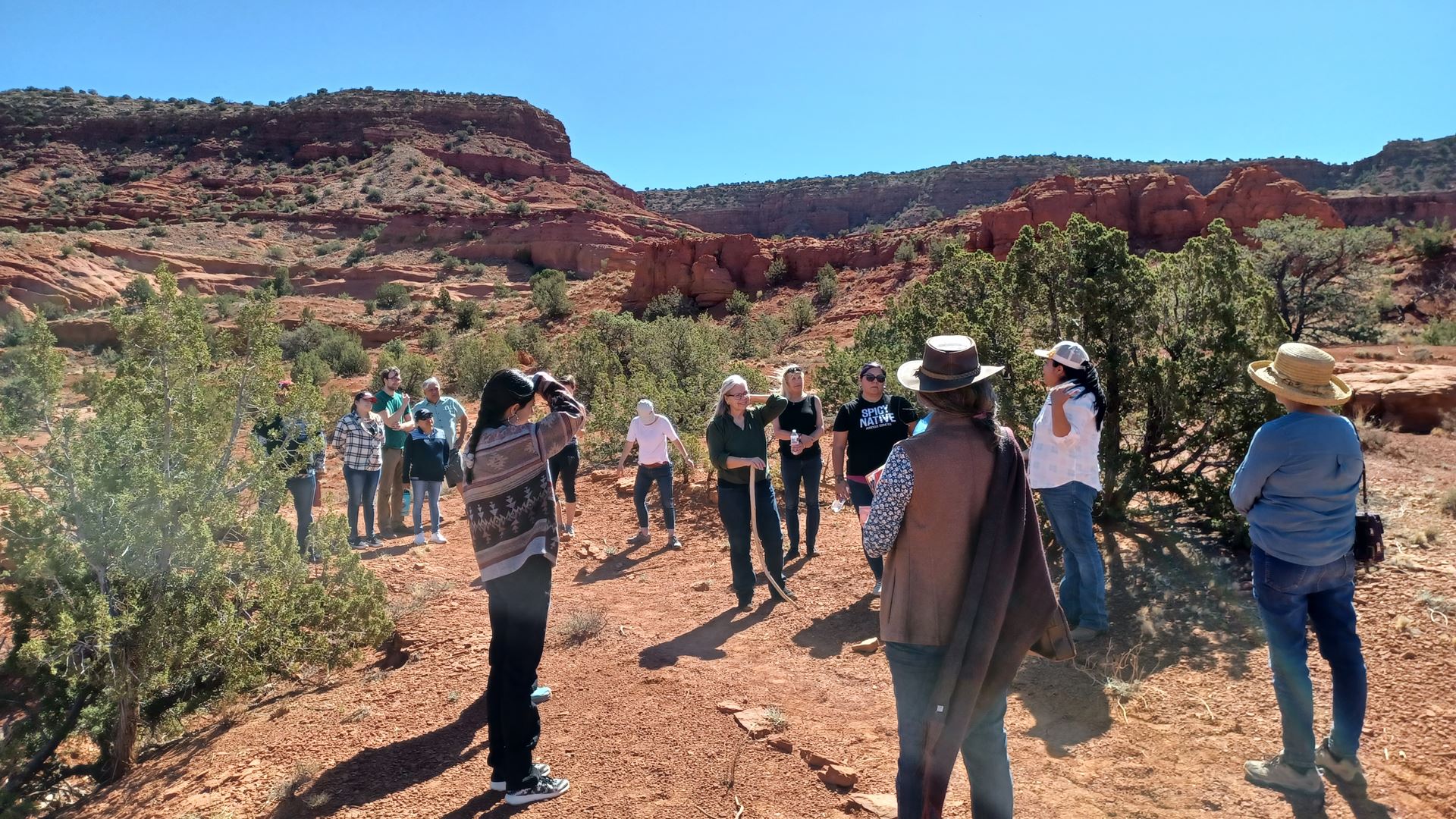Internship opportunities offer students a chance to explore a possible career, learn innovative skills, experiences different places and meet new people on their academic journey. For some Native American high school and college students in New Mexico, the experience can be life-changing.
“I feel like I found what I want to do with my life,” said Izabella Leija, a senior at Española Valley High School. “This program helped me engage with my land as well as my passion for STEM.”
Leija attended the 2023 Northern Stewards Field School at Northern New Mexico College through New Mexico State University’s Indian Resources Development. The 12-week internship inspired her future college plans.
“It made me realize that I want to look more into environmental science as a major,” she said. “I also learned a lot about a chance to explore a possible career, what you can do with drones and how learn innovative skills, experience much technology is very easily available.”
Through IRD, students work with industry leaders, tribal nations, government agencies, higher education institutions and other organizations.
Established in 1978, IRD offers educational and professional development opportunities for Native American students in high school and college in New Mexico. It also supports tribal nations in the state in advancing their economic development goals in agriculture, natural resources, engineering, energy, business, workforce development and education.
For NMSU graduate Bailey Tom, the internship offered an opportunity to conduct a feasibility study about a multi-species meat processing facility on the Navajo Nation.
“This helped advance my professional development because I have met with other meat-processing managers and discussed the necessary steps it takes to open a meat-processing facility,” said Tom, who earned a bachelor’s degree in agricultural business and agricultural economics. “I learned there are many other aspects besides financial analysis that should be included, such as animal availability, skilled labor availability and funding.”
“IRD is committed to linking Native American students to educational and experiential opportunities that can strengthen their skills and, in this way, increase their chances of achieving social mobility and contribute to the well-being of their communities and New Mexico,” former IRD Director Claudia Trueblood said.
Talajhna Hobson, who’s pursuing a liberal arts degree at San Juan College, had the chance to discover how a local greenhouse operates. Hobson said she enjoyed learning about local farmers and growers, and her responsibilities included transplanting chile peppers, watering and fertilizing plants, cleaning weeds and assisting with customer needs.
“It’s a 12-week internship that gives you a look of owning a farm, and what type of business you’re dealing with, more so what you’ll need for a farm and what it takes,” Hobson said.
Tanda McCombe, a coordinator for San Juan College’s Center for Student Careers and Employment, believes the internship program is a huge benefit to students.
“The IRD program has taken our students into areas where they never saw themselves before,” McCombe said. “Whether it was a community-serving foundation, a natural greenhouse or a burgeoning small business, the interns become valued employees, widened their worldview, and meet lasting friends and mentors.”
Advised by a committee of tribal representatives from around the state, IRD also supports scholarships, student research experiences, professional development opportunities, career exploration camps and entrepreneurial endeavors.
“By providing crucial exposure, valuable resources and a nurturing community, the IRD program has empowered our students to break barriers and inspired them to pursue higher education with confidence,” said Chris Gomez, who serves as the education manager for Ysleta del Sur Pueblo’s Department of Tribal Empowerment. “We are deeply grateful for this partnership, which exemplifies the power of prioritizing Native American inclusion in academia.”
With offices in Las Cruces, Albuquerque, Taos and Gallup, Trueblood said she hopes IRD can expand to have a full-time program coordinator in Gallup and a program specialist in Farmington. The program wouldn’t be where it is today without the people who’ve helped build it over the years, she said, and having the current team positioned around the state is critical to IRD’s continued success.
“Some of the most important plans are to continue our geographical expansion so staff members are closer to the people they serve,” she said. “We also want to continue our outreach commitment to high schools that serve the majority of Native American students in New Mexico and continue our commitment to expanding and solidifying partnerships with higher education institutions in the state.”
To learn more about IRD, visit https://ird.nmsu.edu or email ird@nmsu.edu.
A version of this story was first published in the fall 2023 issue of ACES Magazine. For more stories, visit nmsu.news/aces-magazine-fall-2023.
-30-
CUTLINE: To accomplish its mission, Indian Resources Development at New Mexico State University connects Native American students from New Mexico with opportunities for internships, on-the- job experiences and education in the fields of agriculture, the natural resources, engineering energy and business. It also builds collaborations and networks that promote self-directed and self-sustaining economic development and management of resources by tribal nations in New Mexico. (NMSU photo by Andres Leighton)

